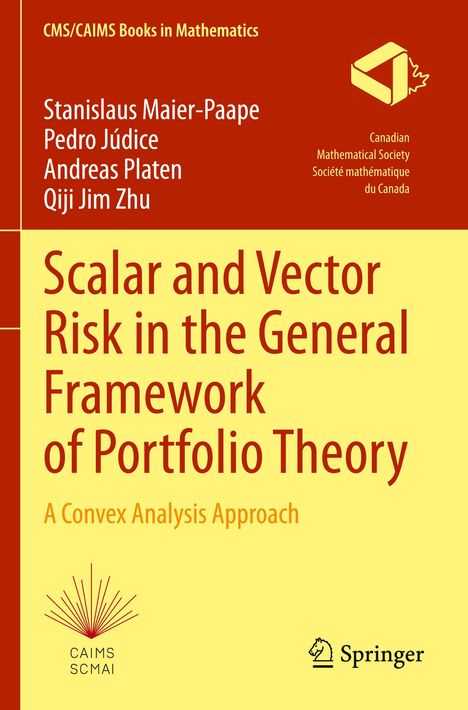Stanislaus Maier-Paape: Scalar and Vector Risk in the General Framework of Portfolio Theory, Kartoniert / Broschiert
Scalar and Vector Risk in the General Framework of Portfolio Theory
- A Convex Analysis Approach
(soweit verfügbar beim Lieferanten)
- Verlag:
- Springer International Publishing, 09/2024
- Einband:
- Kartoniert / Broschiert, Paperback
- Sprache:
- Englisch
- ISBN-13:
- 9783031333231
- Artikelnummer:
- 11961237
- Umfang:
- 240 Seiten
- Nummer der Auflage:
- 2023
- Ausgabe:
- 2023
- Gewicht:
- 371 g
- Maße:
- 235 x 155 mm
- Stärke:
- 14 mm
- Erscheinungstermin:
- 3.9.2024
- Hinweis
-
Achtung: Artikel ist nicht in deutscher Sprache!
Weitere Ausgaben von Scalar and Vector Risk in the General Framework of Portfolio Theory |
Preis |
|---|
Klappentext
This book is the culmination of the authors¿ industry-academic collaboration in the past several years. The investigation is largely motivated by bank balance sheet management problems. The main difference between a bank balance sheet management problem and a typical portfolio optimization problem is that the former involves multiple risks. The related theoretical investigation leads to a significant extension of the scope of portfolio theories. The book combines practitioners¿ perspectives and mathematical rigor. For example, to guide the bank managers to trade off different Pareto efficient points, the topological structure of the Pareto efficient set is carefully analyzed. Moreover, on top of computing solutions, the authors focus the investigation on the qualitative properties of those solutions and their financial meanings. These relations, such as the role of duality, are most useful in helping bank managers to communicate their decisions to the different stakeholders. Finally, bank balance sheet management problems of varying levels of complexity are discussed to illustrate how to apply the central mathematical results. Although the primary motivation and application examples in this book are focused in the area of bank balance sheet management problems, the range of applications of the general portfolio theory is much wider. As a matter of fact, most financial problems involve multiple types of risks. Thus, the book is a good reference for financial practitioners in general and students who are interested in financial applications. This book can also serve as a nice example of a case study for applied mathematicians who are interested in engaging in industry-academic collaboration.


